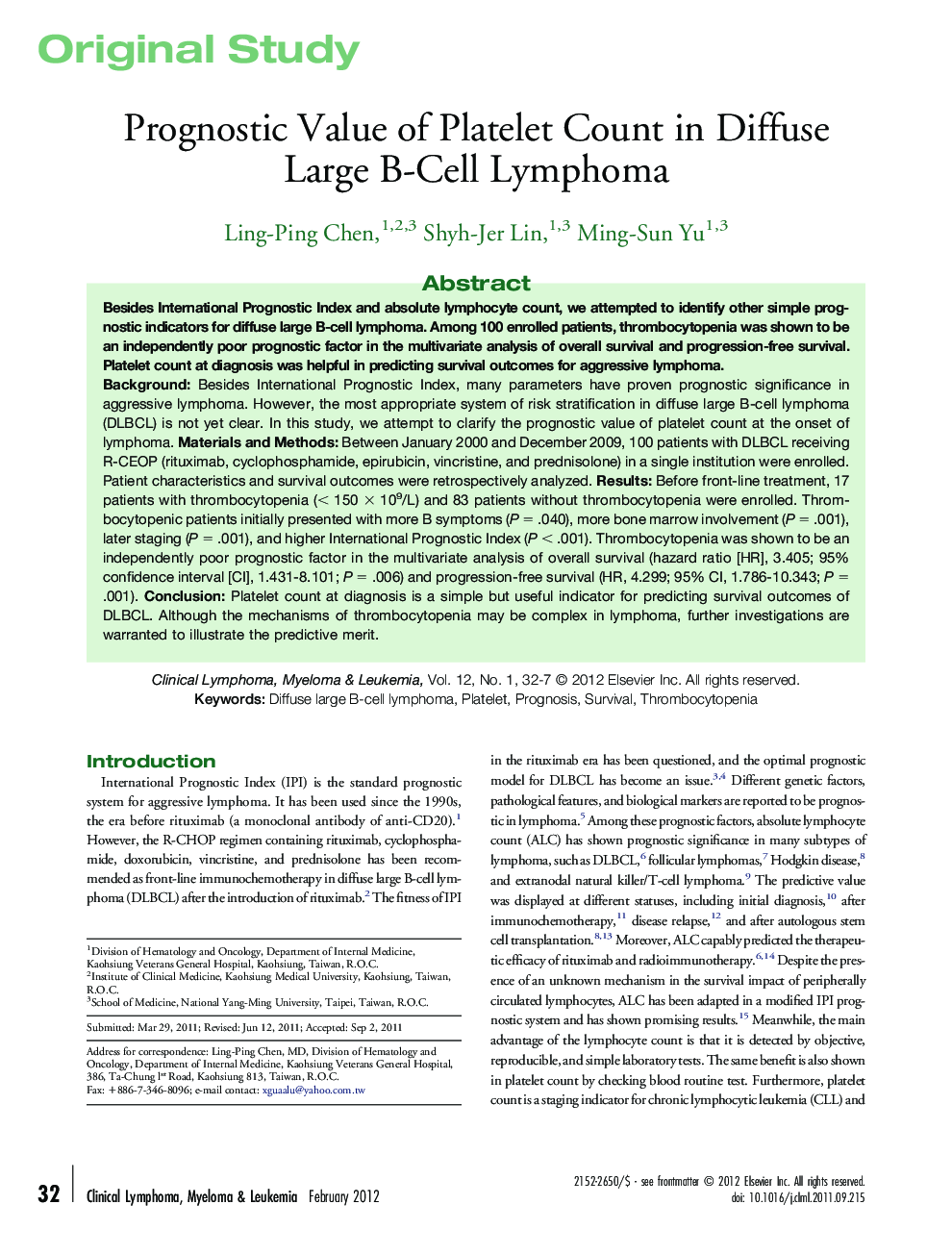| Article ID | Journal | Published Year | Pages | File Type |
|---|---|---|---|---|
| 2755136 | Clinical Lymphoma Myeloma and Leukemia | 2012 | 6 Pages |
BackgroundBesides International Prognostic Index, many parameters have proven prognostic significance in aggressive lymphoma. However, the most appropriate system of risk stratification in diffuse large B-cell lymphoma (DLBCL) is not yet clear. In this study, we attempt to clarify the prognostic value of platelet count at the onset of lymphoma.Materials and MethodsBetween January 2000 and December 2009, 100 patients with DLBCL receiving R-CEOP (rituximab, cyclophosphamide, epirubicin, vincristine, and prednisolone) in a single institution were enrolled. Patient characteristics and survival outcomes were retrospectively analyzed.ResultsBefore front-line treatment, 17 patients with thrombocytopenia (< 150 × 109/L) and 83 patients without thrombocytopenia were enrolled. Thrombocytopenic patients initially presented with more B symptoms (P = .040), more bone marrow involvement (P = .001), later staging (P = .001), and higher International Prognostic Index (P < .001). Thrombocytopenia was shown to be an independently poor prognostic factor in the multivariate analysis of overall survival (hazard ratio [HR], 3.405; 95% confidence interval [CI], 1.431-8.101; P = .006) and progression-free survival (HR, 4.299; 95% CI, 1.786-10.343; P = .001).ConclusionPlatelet count at diagnosis is a simple but useful indicator for predicting survival outcomes of DLBCL. Although the mechanisms of thrombocytopenia may be complex in lymphoma, further investigations are warranted to illustrate the predictive merit.
